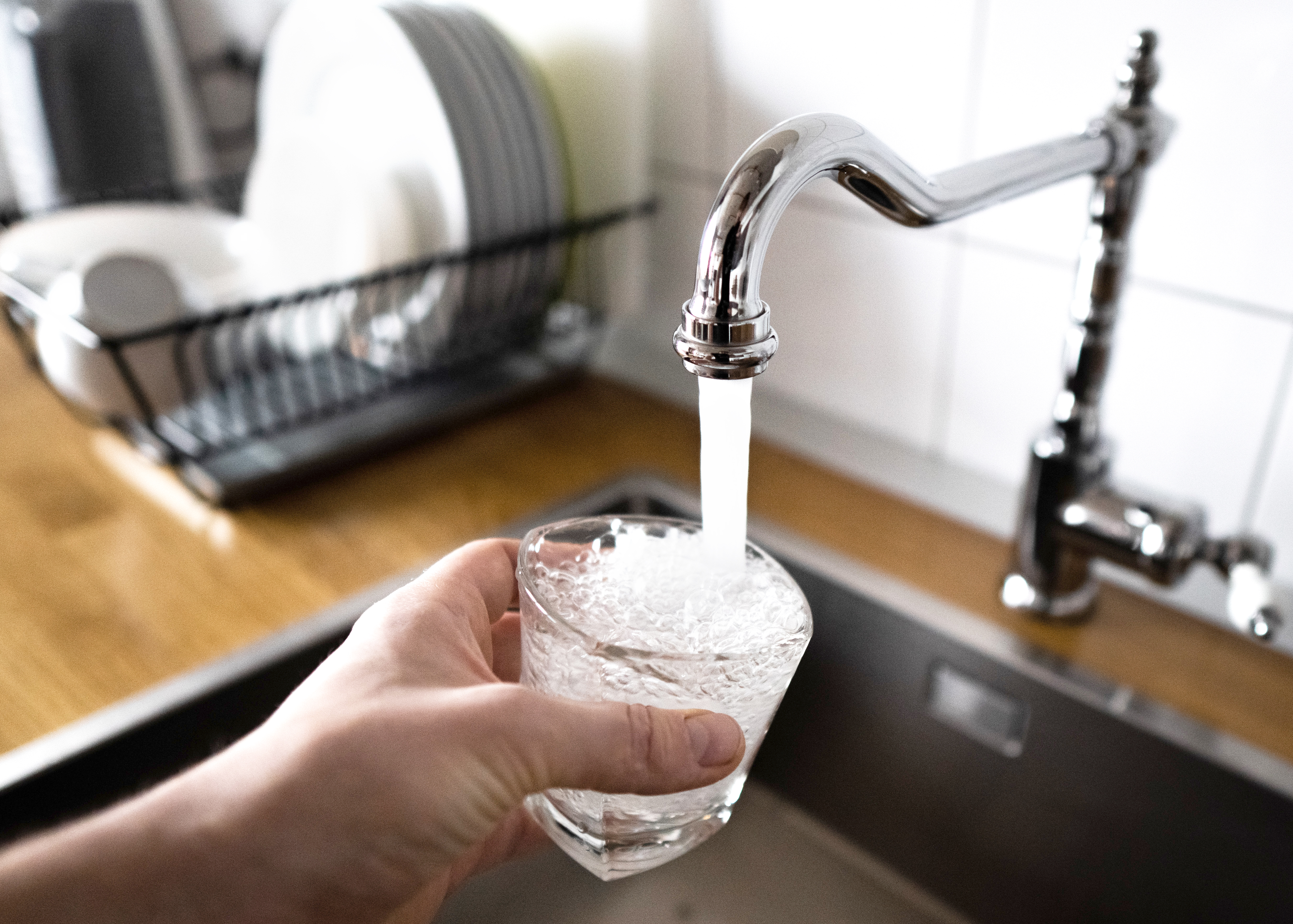
Learn how much plumbers cost in Columbus, Ohio. Discover pricing for faucet repairs, pipe work, and emergency services, plus how you can save money.
Upgrade your sink and your DIY skills


Pedestal sinks can add beauty and elegance to a bathroom. Replacing your sink and vanity combination with a pedestal sink can create an airy feel in what may otherwise seem like a cramped space. It’s best to hire a pro to perform the rough-in plumbing, but beyond that, pedestal sink installation isn’t out of reach for a highly skilled DIYer.
Although a pedestal sink works just like any other type of bathroom sink, installing one is a unique experience. Wall-mounting the sink basin while hiding the drain plumbing takes some special skills. We recommend having a helper by your side for this project.
Getting ready to install a pedestal sink takes considerable preparation. The first step is purchasing a pedestal sink and removing your current sink or vanity. You might want to hire a local plumber to move or install the drain and supply plumbing to fit a pedestal sink, including a drain adapter fitting and supply angle stop valves.
If you’re replacing a vanity, some flooring repair may be necessary. In any case, you’ll need a solid place to mount the sink and will likely need to adjust the plumbing.
A pedestal sink consists of a basin and a pedestal. The basin needs support from the wall and only rests on the pedestal, which mainly hides the plumbing. Depending on the sink you choose, you might install it with a support bracket or lag bolts.
If your sink has instructions included, follow them to determine the height of the mounting bracket or support bolts. If your sink came without instructions, assemble the top and bottom against the wall with a helper. Measure the distance from floor to the support height.
With a keyhole saw, remove a section of drywall at least 6 inches above and below the determined support height between two adjacent wall studs. Cut a piece of 2-by-8-inch board to fit between the two studs and center on the determined support height and angle-drive at least four stainless steels screws through to the studs to secure the piece. Replace the drywall, taping, mudding, and finishing as needed.
Support the sink basin with a mounting bracket or lag bolts. To do this, use your earlier measurement for the support bracket and mark the wall at this height.
If your sink requires lag bolt supports, assemble the pedestal and basin against the wall and mark the location of the bolt holes. Check that your marks are level.
If your sink uses a support bracket, install and level it at the determined height following the manufacturer’s instructions.
To simplify the final installation steps, get the drain plumbing cut and prepped before moving forward. These steps are the same whether you’re using chrome or plastic parts.
First, install the drain assembly into the sink following the manufacturer’s instructions. Don’t install the pop-up parts at this time.
Insert the drain elbow into the drain fitting in the wall. Leave it loosely inserted for now.
Assemble the pedestal and sink in its desired location. Assemble the P trap section of plumbing and test fit it to the drain elbow and the drain tailpiece.
Remove the sink from the pedestal and cut the tailpiece, if needed, with a hacksaw. Retest the fit before moving to the next step.

It’s much easier to install the faucet before mounting the sink on the wall.
Install the faucet following the manufacturer’s instructions. Connect the supply connectors to the faucet but not the water supply valves yet.
You can do this step in a pinch if you’re by yourself, but it’s much easier to have a helper in the room with you.
For sinks supported by a bracket, slide the pedestal and basin into place and slip the back of the sink onto the support bracket.
If your sink requires bolts for support, predrill the bolt locations, slide the pedestal and basin into place, and install the bolts into the wall, but don’t tighten them yet. Check that the sink is level, adjust it if needed, and gently tighten the lag bolts.
With the sink and pedestal securely in place, connect the P trap to the drain elbow and drain tailpiece. Secure by hand and tighten with slip-joint pliers if needed.
Install the pop-up assembly parts. Connect the faucet supply connectors to the angle stop valves.
Slowly open the supply valves while keeping an eye out for any water leaks at the faucet. Turn the faucet on, and let the water run for several minutes while checking for supply and drain leaks. If no leaks are present, you’re ready to complete your installation.

Follow the installation instructions if your pedestal requires fastening to the floor. Caulk the seam between the sink top and wall along the top and sides of the basin. If desired, caulk the seam between the front and sides of the pedestal and the floor.
Even if you’ve installed other sinks yourself, installing a pedestal sink presents unique challenges. Careful planning and measuring can reduce difficulties, but it may not be everyone’s favorite installation project. The DIY cost of installing a pedestal sink is between $250 and $1200. Most of that is the sink price and the cost of hiring a plumber for the rough-in plumbing.
You may choose to simply have a sink installer near you complete the job since a pro needs to move the plumbing anyway. In that case, the total sink installation cost will increase by around $400.
From average costs to expert advice, get all the answers you need to get your job done.

Learn how much plumbers cost in Columbus, Ohio. Discover pricing for faucet repairs, pipe work, and emergency services, plus how you can save money.

Learn about main water line repair costs in Columbus and what affects pricing to be prepared before you start getting estimates.

Discover the leading factors affecting your main water line replacement cost in Columbus, including length, material selection, and installation details.

Need to stop a plumbing leak quickly and minimize water damage in your home? Buy yourself some time with these temporary fixes for a leaking pipe.

Installing a new kitchen sink involves removing the old sink and putting in the new one. Follow these steps to learn how to install a kitchen sink like a pro.

Fixing a leaky faucet starts with knowing which type of faucet you have. Follow these steps to learn how to fix a leaky faucet in no time.